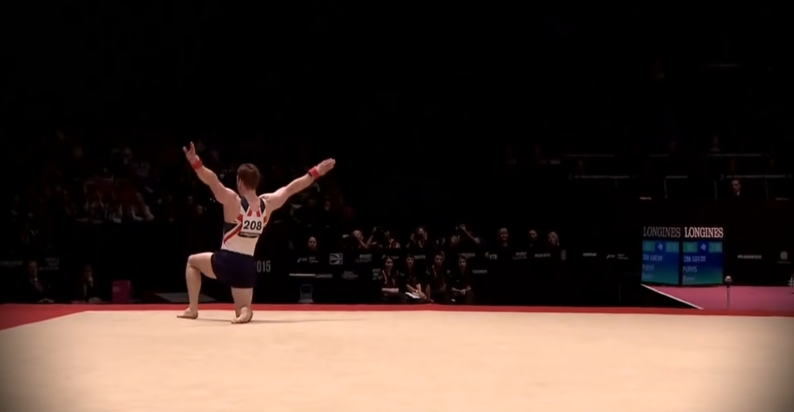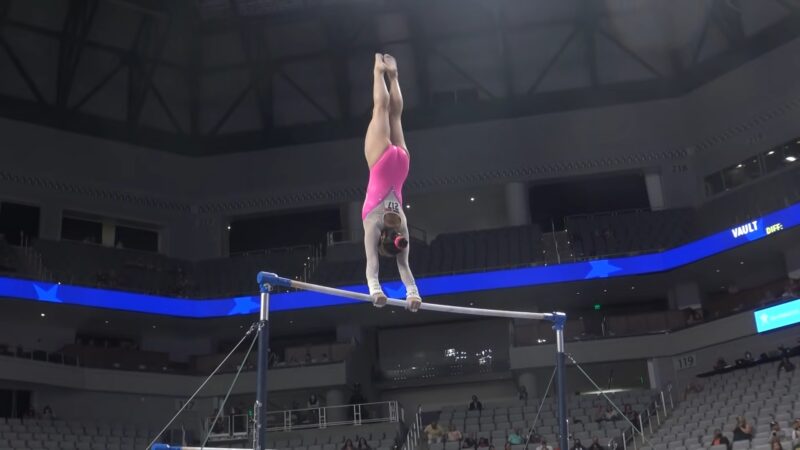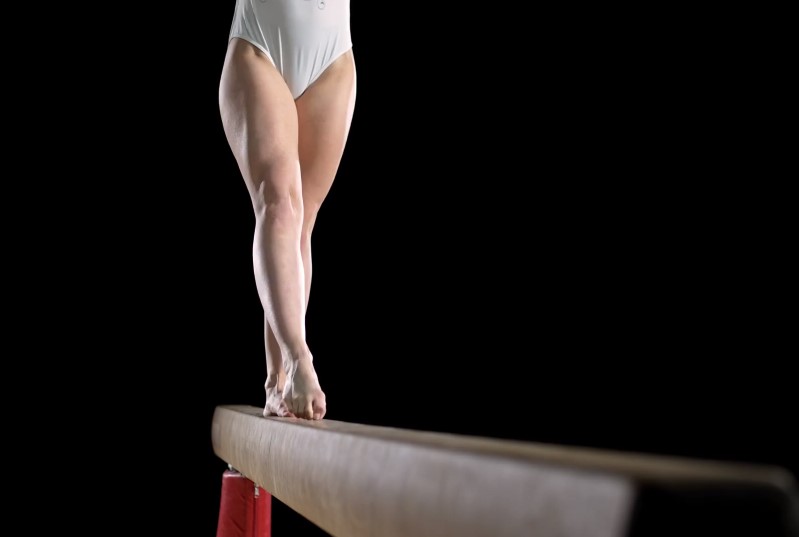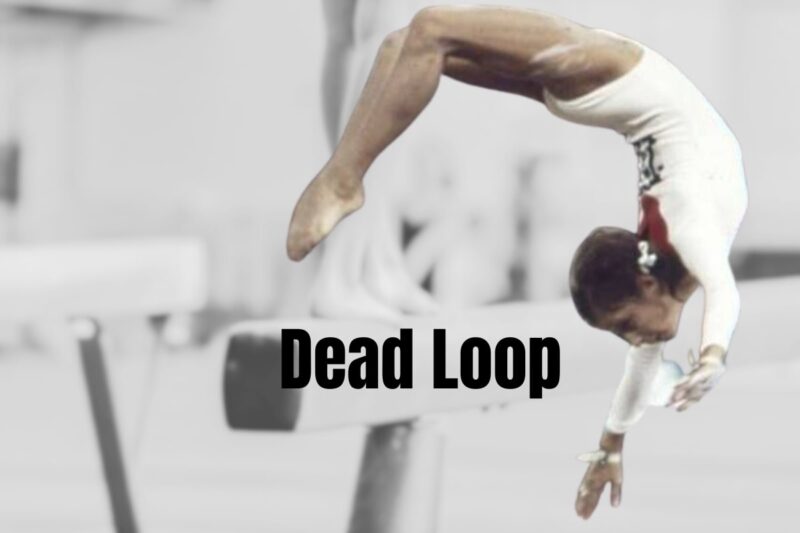Gymnastics, is a sport that requires strength, flexibility, agility, coordination, and balance. It includes various disciplines and has been a part of the Olympic Games since its modern inception in 1896.
The infamous ‘Dead Loop’, or Korbut Flip, is a renowned gymnastics skill that can be performed on two different apparatus: the uneven bars and the balance beam. On the uneven bars, the gymnast stands on the high bar, performs a backflip, and regrasps the bar.
This spectacular version was first performed internationally by Soviet gymnast Olga Korbut at the 1972 Summer Olympics and was banned immediately thereafter for safety concerns.
“Fun Fact: The Korbut Flip was modified in the 1980s to be performed towards the low bar, and the Code of Points was later changed to ban standing on the high bar during routines.”
The Dead Loop
The ‘Dead Loop’ has two main variations: one on the uneven bars and the other on the balance beam. The uneven bars version is both more spectacular but also more dangerous, and the version of the move is banned in competition.
| Apparatus | Description | Level of Difficulty |
| Uneven Bars | Backflip from standing on the high bar | Advanced |
| Balance Beam | Flip from standing, landed in a straddled position | Relatively Simple |
Unlike other gymnastics skills, the ‘Dead Loop’ has a unique execution that involves a backward release move. It’s a pioneering skill that set a precedent for other complex moves in gymnastics.
The technical execution requires precise timing, strength, and coordination. The risk factors include potential falls and injuries, especially if not performed with proper technique.
“Pro Tip: Safety should always be the priority in gymnastics, and attempting high-risk moves like the Dead Loop should only be done under expert supervision”
History of Gymnastics and Safety Concerns

Gymnastics has a rich history dating back to ancient Greece. It has evolved over the centuries into a competitive sport with various disciplines and complex skills like the ‘Dead Loop’.
Safety has always been a concern in gymnastics, with incidents and injuries occurring due to the high level of difficulty in certain skills. The Dead Loop itself has been modified over time to enhance safety.
| Year | Event | Description |
| 1972 | Introduction of Korbut Flip | First backward release move on uneven bars |
| 1977 | Modification by Elena Mukhina | Added a full twist to the Korbut Flip |
| 1980s | Modification towards the low bar | Changed the direction of the flip |
The need for safety regulations and guidelines is paramount in gymnastics. The Federation of International Gymnastics (FIG) and other governing bodies have issued codes and rules to ensure the safety of gymnasts.
| Measure | Description | Impact |
| Code of Points Modification | Banned standing on the high bar | Enhanced Safety |
| Coaching Guidelines | Emphasis on proper training and technique | Injury Prevention |
| Equipment Standards | Ensuring the quality and safety of the apparatus | Reduced Risk |
“Fun Fact: The Korbut Flip on the balance beam is today considered a relatively simple skill, valued at only a “B” level in the 2017 Code of Points”
The Controversy Surrounding the Dead Loop

The Korbut Flip, gained immense popularity after Olga Korbut’s stunning performance at the 1972 Munich Olympics. Representing the Soviet Union, Korbut’s execution of this dangerous stunt left spectators and fellow gymnasts in awe.
Despite its popularity, the move raised significant concerns among coaches, officials, and medical professionals. The immense risks involved in its performance led to widespread dissuasion from attempting the move.
| Concern | Description | Impact |
| Safety | High risk of missing the bar or losing footing | Potential severe injuries |
| Technical Complexity | Requires precise execution and timing | Difficult to perform correctly |
| Ethical Considerations | Encouraging dangerous stunts | Negative influence on young gymnasts |
The debate on the appropriateness and safety of the Dead Loop intensified shortly after the 1972 Munich Olympics. The stunning yet perilous nature of the move led to its ban from high-level international sporting competitions.
“Fun fact: The Dead Loop went viral on social media platforms in 2022, with a video of Korbut’s performance notching up over 2 million hits.”
Gymnastics Federations’ Response
National and international gymnastics federations, recognizing the risks involved in the Dead Loop, took a firm stance against the move. The decision to ban the Dead Loop was a significant step in prioritizing safety in the sport.
The federations’ response to the Dead Loop involved collaboration with gymnasts, coaches, and medical experts. This collective approach ensured that the decision was well-informed and aligned with the best interests of the sport.
| Response | Description | Impact |
| Ban | Prohibition of the Dead Loop in competitions | Enhanced safety standards |
| Guidelines | Issuance of safety guidelines and recommendations | Educating gymnasts and coaches |
| Public Awareness | Media coverage and public debates | Increased awareness of safety in gymnastics |
Alternatives to the Dead Loop

While the Dead Loop has been banned from competitions, gymnastics continues to evolve with new and innovative skills. Gymnasts have explored other advanced elements that challenge their abilities while adhering to safety guidelines.
| Skill | Apparatus | Description | Level of Difficulty |
| Gienger | Uneven Bars | A backflip with a half twist to regrasp the bar | Advanced |
| Yurchenko | Vault | A round-off onto the springboard followed by a backflip | Advanced |
| Amanar | Vault | A Yurchenko with 2.5 twists in the post-flight | Highly Advanced |
The ban on the Dead Loop has led to an increased emphasis on innovation, creativity, and safety in gymnastics. Coaches and gymnasts are encouraged to explore new techniques that push the boundaries of the sport without compromising safety.
The gymnastics community continues to encourage diversity in routines, allowing gymnasts to express their unique styles and strengths. By exploring different skills and combinations, gymnasts can create captivating routines without relying on high-risk elements like the Dead Loop.
FAQ
How Did the Dead Loop Get Its Name?
Also known as the Korbut Flip, named after Olga Korbut, who performed the move at the 1972 Munich Olympics.
Has the Dead Loop Been Performed Successfully in Competitions Before?
Yes, it was performed successfully by Olga Korbut at the 1972 Munich Olympics. Shortly after, it was banned from high-level international sporting competitions.
What Are the Most Challenging Technical Aspects?
The precise timing, strength, and coordination to execute the backflip and regrasp the bar without losing footing.
How Has the Ban on the Dead Loop Affected the Gymnastics Community?
The ban on the Dead Loop has led to a renewed focus on safety and responsible innovation in gymnastics. It serves as a reminder of the importance of ethical considerations in the sport.
Conclusion
The Dead Loop, or Korbut Flip, has left a lasting impact on gymnastics. Its spectacular execution, followed by a ban, has shaped the sport’s approach to innovation, creativity, and safety.
The ban was implemented due to the immense risks involved in its performance. The decision reflects the sport’s commitment to prioritizing safety and ethical considerations.
The future of gymnastics continues to be bright, with new talents and innovations emerging. The lessons learned from the Dead Loop serve as a guide for responsible growth and development in the sport, ensuring that safety remains at the forefront.
